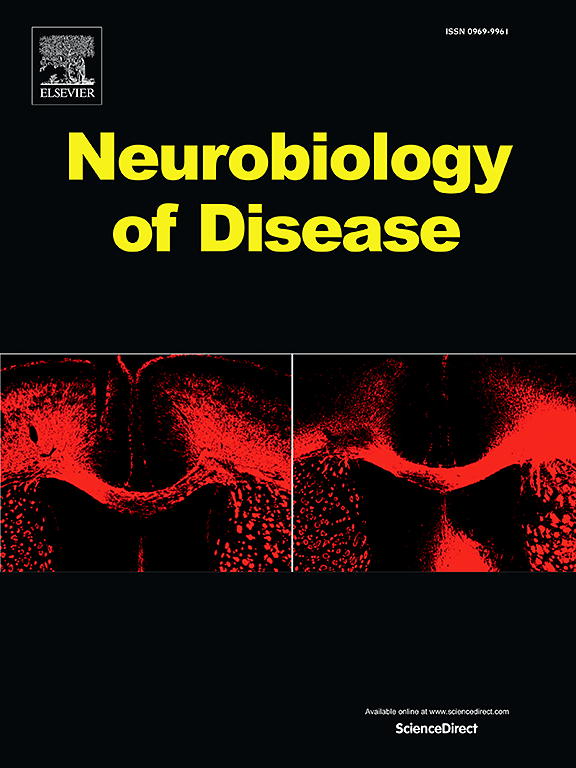基于综合生物信息学和实验分析鉴定癫痫中与二硫中毒相关的生物标志物。
IF 5.1
2区 医学
Q1 NEUROSCIENCES
引用次数: 0
摘要
癫痫(EP)是一种以反复发作为特征的脑部疾病,其潜在机制之一被认为是细胞死亡。双曲下垂是一种新的细胞死亡机制,被认为在癫痫的发病机制中起作用,但确切的作用尚不清楚。使用基因表达综合系列(GSE) 33000和GSE63808数据集搜索差异表达的二硫中毒相关分子(DE-DRMs)。发现了de - drm之间的相关性。然后使用癫痫患者来研究基于DE-DRMs表达的分子簇。然后,通过GSE143272数据集和预测分子验证,确定了最佳机器学习模型。预测分子与临床特征之间的相关性被确定。基于离体和体内癫痫模型,通过实验分析验证DE-DRMs的表达及其相关性。9个分子被鉴定为DE-DRMs:糖原合成酶1 (GYS1)、溶质载体家族3成员2 (SLC3A2)、溶质载体家族7成员11 (SLC7A11)、NADH:泛醌氧化还原酶核心亚基S1 (NDUFS1)、3-氧酰基- acp合成酶、线粒体(OXSM)、富含亮氨酸的五肽重复序列(LRPPRC)、NADH:泛醌氧化还原酶亚基A11 (NDUFA11)、NUBP铁硫集群组装因子、线粒体(NUBPL)和NCK相关蛋白1 (NCKAP1)。NDUFS1与NDUFA11、NUBPL和LRPPRC相互作用,SLC3A2与SLC7A11相互作用。最优的机器学习模型是随机森林(RF)模型。G蛋白鸟嘌呤核苷酸结合蛋白α亚基q (GNAQ)与丙戊酸钠耐药有关。实验分析表明SLC7A11表达上调,SLC3A2和SLC7A11复合物的形成数量增加,NDUFS1和NDUFA11复合物的形成数量减少。这项研究提供了先前未记载的证据,证明了上睑下垂和EP之间的关系。除了提示SLC7A11可能是EP的特异性DRM外,本研究还证实了两种二硫分解相关蛋白复合物的改变:SLC7A11- slc3a2和NDUFS1-NDUFA11。本文章由计算机程序翻译,如有差异,请以英文原文为准。

Identifying disulfidptosis-related biomarkers in epilepsy based on integrated bioinformatics and experimental analyses
One of the underlying mechanisms of epilepsy (EP), a brain disease characterized by recurrent seizures, is considered to be cell death. Disulfidptosis, a proposed novel cell death mechanism, is thought to play a part in the pathogenesis of epilepsy, but the exact role is unclear. The gene expression omnibus series (GSE) 33000 and GSE63808 datasets were used to search for differentially expressed disulfidptosis-related molecules (DE-DRMs). A correlation between the DE-DRMs was discovered. Individuals with epilepsy were then used to investigate molecular clusters based on the expression of DE-DRMs. Following that, the best machine learning model which is validated by GSE143272 dataset and predictor molecules were identified. The correlation between predictive molecules and clinical traits was determined. Based on the in vitro and in vivo seizures models, experimental analyses were applied to verify the DE-DRMs expressions and the correlation between them. Nine molecules were identified as DE-DRMs: glycogen synthase 1 (GYS1), solute carrier family 3 member 2 (SLC3A2), solute carrier family 7 member 11 (SLC7A11), NADH:ubiquinone oxidoreductase core subunit S1 (NDUFS1), 3-oxoacyl-ACP synthase, mitochondrial (OXSM), leucine rich pentatricopeptide repeat containing (LRPPRC), NADH:ubiquinone oxidoreductase subunit A11 (NDUFA11), NUBP iron‑sulfur cluster assembly factor, mitochondrial (NUBPL), and NCK associated protein 1 (NCKAP1). NDUFS1 interacted with NDUFA11, NUBPL, and LRPPRC, while SLC3A2 interacted with SLC7A11. The optimal machine learning model was revealed to be the random forest (RF) model. G protein guanine nucleotide-binding protein alpha subunit q (GNAQ) was linked to sodium valproate resistance. The experimental analyses suggested an upregulated SLC7A11 expression, an increased number of formed SLC3A2 and SLC7A11 complexes, and a decreased number of formed NDUFS1 and NDUFA11 complexes. This study provides previously undocumented evidence of the relationship between disulfidptosis and EP. In addition to suggesting that SLC7A11 may be a specific DRM for EP, this research demonstrates the alterations in two disulfidptosis-related protein complexes: SLC7A11-SLC3A2 and NDUFS1-NDUFA11.
求助全文
通过发布文献求助,成功后即可免费获取论文全文。
去求助
来源期刊

Neurobiology of Disease
医学-神经科学
CiteScore
11.20
自引率
3.30%
发文量
270
审稿时长
76 days
期刊介绍:
Neurobiology of Disease is a major international journal at the interface between basic and clinical neuroscience. The journal provides a forum for the publication of top quality research papers on: molecular and cellular definitions of disease mechanisms, the neural systems and underpinning behavioral disorders, the genetics of inherited neurological and psychiatric diseases, nervous system aging, and findings relevant to the development of new therapies.
 求助内容:
求助内容: 应助结果提醒方式:
应助结果提醒方式:


